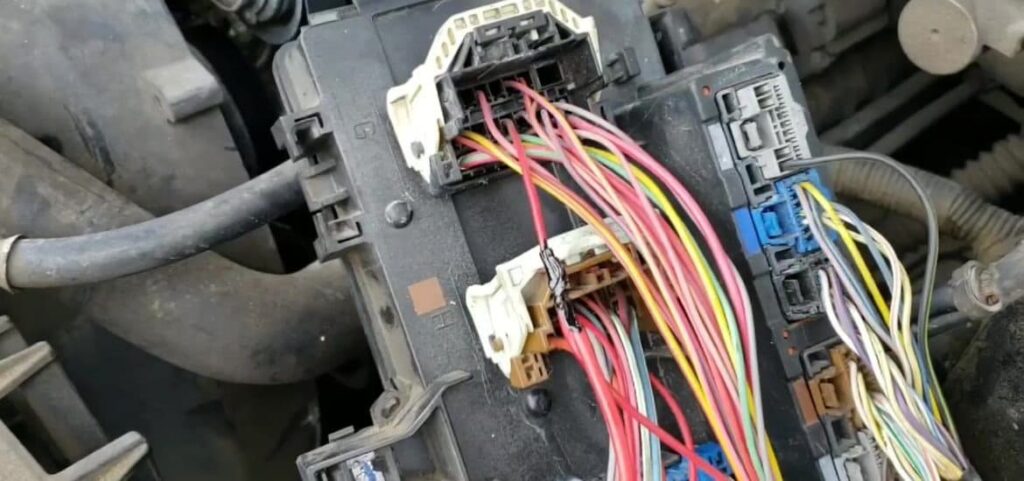P0500 – Vehicle Speed Sensor Malfunction.
If your check engine light is on, and you’ve diagnosed a P0500 error code, it is likely due to a malfunctioning vehicle speed sensor. In this blog post, we’ll explain what a vehicle speed sensor is, what can cause it to malfunction, and how to fix the issue. Keep reading to learn more about P0500 error codes and how to remedy them.
Table of Contents
- What is P0500 and what does it mean when it comes to your vehicle’s speed sensor?
- How can you tell if your vehicle’s speed sensor is malfunctioning?
- What are some common causes of a speed sensor malfunction?
- How can you fix a speed sensor malfunction yourself ?
- When should you take your vehicle to a mechanic for help with a speed sensor issue?
- Conclusion
- Frequently Asked Question about P0500 error code
Home » Understanding P0500 – Vehicle Speed Sensor Malfunction and How to Fix It
What is P0500 and what does it mean when it comes to your vehicle’s speed sensor?
P0500 is an error code referring to your vehicle’s vehicle speed sensor, which is responsible for determining how fast your car is going. This code can be caused by a malfunctioning wire or connection in the speed sensor, a faulty speed sensor itself, or even a broken vehicle engine control module.
If you experience this code, you may notice reduced power when accelerating and issues with cruise control. Have your vehicle inspected by a professional auto mechanic if you see this code so that they can identify and fix the issue quickly and get you safely back on the road.
How can you tell if your vehicle’s speed sensor is malfunctioning?
The symptoms of a speed sensor malfunction will vary depending on the type of vehicle and how it’s designed. Generally, however, drivers may notice that their vehicle’s cruise control no longer works, there is an increase in fuel consumption without any other changes, or the shift indicator and other dashboard lights stay lit even when the vehicle is idle.
Additionally, if there are noticeable RPM drops and jerks when you accelerate, this can also be a sign of an issue with the speed sensor. To confirm that this is the cause of your issues, it’s best to take your car to a certified mechanic as they can quickly determine what may be causing the problem.
What are some common causes of a speed sensor malfunction?
A speed sensor malfunction is typically caused by a loose wire connection, corrosion of the electrical contacts, a broken wire in the harness, an external electrical interference, or a faulty internal electronic component. In some cases, small particles such as dirt and debris may disrupt the signal coming from the speed sensor.

Poorly maintained components can also cause the wear on the part to increase at a rapid rate, leading to degraded performance. Ultimately, any issue that compromises or diminishes the integrity of a signal from the speed sensor may lead to its failure over time.
How can you fix a speed sensor malfunction yourself ?
Owning a car entails more than just driving and taking it out for the occasional spin. To keep your vehicle running in optimal condition, maintaining it regularly is paramount. One key element to diagnose and maintain is to identify and repair a speed sensor malfunction. Depending on the make and model of your vehicle, you can attempt to fix a speed sensor malfunction yourself.
First, examine the area around the speed sensor for any signs of physical damage or leakages. If there is no physical damage visible, use an OBD-II scanner for accurate diagnosis. Check that all of the wiring connections are working properly; if any connections seem loose, reattach them firmly. Lastly, clean any corrosion off of contact points with electrics cleaner to ensure that the speed sensor will be able to transmit relevant information accurately. Being proactive about maintaining your vehicle will go a long way when it comes to ensuring its longevity and reliability.
When should you take your vehicle to a mechanic for help with a speed sensor issue?
You should take your vehicle to a mechanic as soon as you suspect there’s an issue with the speed sensor. This is because such sensors play an important role in controlling the accelerator and other related systems, and it is important for their functioning to be optimal at all times.
When these components start malfunctioning, it can potentially increase your risk of getting into an accident. Problems with speed sensors often manifest themselves through certain telltale signs, such as jerking when transitioning from reverse to drive, stalling the engine and reduced fuel efficiency. If you notice any of these symptoms, make sure you get your vehicle checked by a professional mechanic right away.
Conclusion
A speed sensor issue can be very frustrating, but thankfully it is often a easy fix. By following the steps in this blog post, you should be able to diagnose and resolve the problem quickly and easily. However, if you find that you are still having trouble or the problem persists, it is best to take your car to a mechanic for help. Thank you for reading and we hope this was helpful!
Frequently Asked Question about P0500 error code
What is a P0500 error code?
A P0500 error code is a standard diagnostic trouble code that indicates issues with the vehicle’s speed sensor. Specifically, it means that the vehicle’s electronic control unit (ECU) has detected an irregular voltage signal coming from the sensor.
What causes a P0500 error code?
A P0500 error code can occur for a variety of reasons. Common causes include loose wire connections, corrosion of the electrical contacts, damage to the wiring harness, external electrical interference, and faulty internal electronic components. Additionally, small particles such as dirt and debris may disrupt the signal coming from the speed sensor leading to this error code.
How can I fix a P0500 error code?
In order to fix a P0500 error code, first inspect all wiring connections around the speed sensor for any signs of loose wires or corrosion. If there are any signs of physical damage or leakage in the area surrounding the speed sensor, it should be immediately addressed and repaired.
What are the symptoms of a P0500 error code?
Symptoms of a P0500 error code can include jerking when transitioning from reverse to drive, stalling the engine, and/or decreased fuel efficiency.
What are the consequences of a P0500 error code?
The consequences of a P0500 error code can be serious and potentially even dangerous if not addressed in a timely manner. One of the main risks associated with this error code is that it can lead to the vehicle’s acceleration becoming unreliable and jerky. This can make it more difficult to control the car.


